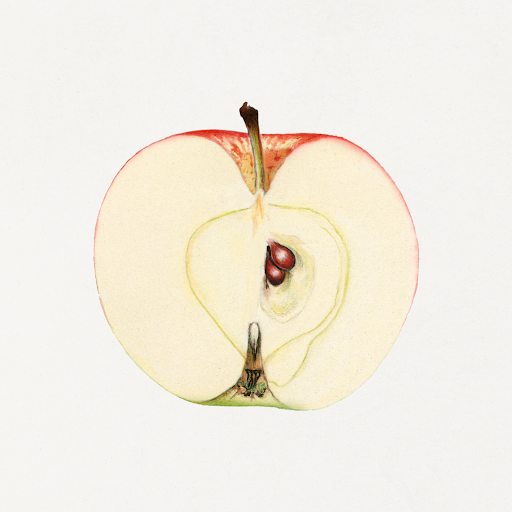
3 FINTECH NEWS STORIES
#1: Klarna Balance
What happened?
Klarna announced a couple of new offerings:
The two new products, which are being rolled out in 12 markets including the U.S. and across Europe, will show up in the Klarna app as “balance” and “cashback.”
Klarna balance lets users store money in a bank-like personal account, which they can then use to make instant purchases and pay off their buy now, pay later loans.
Users can also receive refunds for returned items directly in their Klarna balance.
Cashback offers customers the ability to earn up to 10% of the value of their purchases at participating retailers as rewards. Any money earned gets automatically stored in their balance account.
So what?
The Klarna press release announcing the news in the U.S. went with the headline, “Klarna customers can ‘save now, pay later’ with new balance and cashback features.”
Sounds great, but I think it’s a bit of an oversell.
Klana Balance isn’t a checking or savings account. It’s a closed-loop stored balance account, similar to the one Starbucks offers.
It’s not FDIC-insured. Money placed in a Klarna Balance account (by the user or from refunds or cashback) can’t be transferred back out into a bank account. And, in the U.S., Klarna Balance users do not earn any interest on their stored funds (European users will earn interest … Klarna has a European banking license and has offered an interest-bearing deposit account in Germany for a while).
This poses an obvious question — If Klarna wanted to help its U.S. users “save now and pay later,” why didn’t it spring for a full embedded bank account, with an interest rate and FDIC insurance and the whole bit?
And I think the answer is also obvious, although it bears repeating: Klarna is a shopping app, not a banking app. It wants to help users spend more money than they otherwise would because that’s the value it sells to its customers (i.e., merchants).
When viewed through this lens, a Starbucks-style stored balance account is a perfect fit.
#2: Apple Opens Up
What happened?
Apple is opening up access to its on-device NFC chip for third-party developers:
Facing increasing pressure from regulators, Apple on Wednesday announced it’s opening up NFC transactions to third-party developers. NFC, or near field communication, is the short-range wireless technology that powers Apple Pay and Wallet. Apple’s exclusive access to the iPhone’s NFC capabilities had been under investigation by the European Commission for years for restricting competition in the mobile payments space, leading Apple to ultimately open up its tap-and-go technology to third parties in the region.
Now, Apple is broadening access to other markets, as well. According to its announcement, Apple will initially make its new NFC and Secure Element APIs available to developers in Australia, Brazil, Canada, Japan, New Zealand, the U.K. and the U.S., with additional locations to follow. The APIs will become available with the release of the iOS 18.1 update.
So what?
One way to read this news (which is how TechCrunch seems to be reading it) is that this is Apple getting ahead of regulators outside the EU, which may, at some point, follow the EU’s lead and force Apple to open up access to its tap-to-pay functionality for third-party developers.
By doing it voluntarily, Apple can forestall any more regulatory action on this front and can preserve its ability to take a vig:
Developers will still have to accept Apple’s terms by entering into “a commercial agreement with Apple,” and the company hasn’t yet said what that entails. The agreement will allow developers to request an entitlement and pay the associated fees, indicating this is not a freely available service.
I think there’s some truth to this interpretation of the news.
However, I also think this fits within a broader strategy starting to take shape at Apple.
When Apple bailed on Apple Pay Later — the company’s short-lived BNPL product — it pivoted to partnering with third-party BNPL providers. However, instead of simply selecting a single provider and integrating with them, Apple developed its own schema within Apple Pay to allow Apple Pay issuers (and their processing partners) to integrate individually to offer BNPL alongside their existing credit and debit cards.
This was not the light-touch approach of a company abandoning its financial services ambitions, which suggests that Apple may instead be pursuing a broader partnership vision with the financial services providers in its ecosystem.
The decision to open up tap-to-pay is another piece of this puzzle. It will enable digital wallet providers (PayPal, Cash App, Paze, etc.) to deliver significantly more comprehensive and frictionless commerce experiences to their end users.
In the short term, this will weaken Apple Pay’s competitive position in the market. However, it could be a long-term win for Apple if it marks the beginning of a more friendly and open era in its relationships with third-party developers.
And imagine what else Apple could do in this area: open banking data aggregation (there are hints that this might happen!), KYC and digital identity (building on its integrations with state DMVs), credit underwriting (building on the Credit Kudos acquisition), financial health scoring and monitoring (would be a killer expansion for Apple Health).
#3: BlockFi, But Not Drunk
What happened?
Public announced a new product:
Public … announces the launch of a Bond Account, a convenient way to invest in multiple bonds with the potential to earn 7.3%* in yield. The new Bond Account will allow members to invest in a diverse set of ten corporate bonds issued by companies across various industries, including well-known names, that range in yield from 6-9%**.
With the potential for the Federal Reserve to cut rates later this year and in early 2025, retail investors are turning to corporate and treasury bonds to lock in today’s high-yield rates for years to come. Once rates are cut, yields may begin to decline steadily, so yield-seeking investors are now buying long-term bonds.
So what?
This is very similar to the Treasury Account product that Public launched last year, which wrapped a savings account-like experience around T-Bill investing.
The Treasury Account made a lot of sense at the time (in a high rate environment, T-Bills are an attractive investment), and I didn’t have any problem with framing the product as a savings account-like experience because T-Bills are an incredibly safe investment, comparable to keeping your money in a bank deposit account.
This new Bond Account is a bit different.
The yield is higher, but so are the risks (obviously). This makes me nervous, on an intuitive level, because we’ve seen how badly it can go when riskier investments are packaged and marketed as if they were bank accounts.
BlockFi, the one-time provider of crypto-fueled “Interest Accounts,” is my favorite example. The company went bust after its CEO Zac Prince overruled his own risk management team and made an astonishingly big bet on Alameda, Sam Bankman-Fried’s investment firm.
(BTW, for a disturbing trip in the fintech time machine, go read Packy McCormick’s piece Is BlockFi the Future of Finance?)
I want to be extraordinarily clear — Public is not in the same galaxy as BlockFi, and nothing about Public’s Bond Account appears to me to be weird or shady. Public does a very thorough job explaining how the account works and disclosing the risks (which it seems to be trying to minimize in the selection of the specific bonds). And the value prop is very compelling (although I wish Public would ditch the “countdown to the next rate decision” timer on its website).
Overall, I’m fascinated to see if Public can continue democratizing access to different investment strategies while staying on the right side of the BlockFi line.
So far, so good.
2 FINTECH CONTENT RECOMMENDATIONS
#1: Online sports betting hurts consumers (by Ben Krauss and Milan Singh, Slow Boring) 📚
Somewhat in keeping with the theme of today’s newsletter, I wanted to recommend this article, which explores the findings of two new research papers on the effect of legalized mobile sports gambling on bettors’ financial health.
As you would likely guess, the results aren’t good, especially for low-income men.
One of the findings that stood out was that increased sports betting tends to replace investment in the stock market. Roughly, researchers estimate that $1 of betting reduces net investment by around $2.
#2: What the heck is a brokered deposit anyway? (by Simon Taylor, Fintech Brainfood) & Brokered Deposits (Marty’s Version) (by Jason Mikula, Fintech Business Weekly) 📚
Two recommendations for the price of one!
I always enjoy it when Simon, Jason, and I converge on the same topic in the same week (here’s the link to my essay last week, ICYMI).
Brokered deposits gets us nerds fired up!
(BTW — Watch for more smart analysis on brokered deposits from the Queen of Bank Nerds Kiah Haslett soon, and watch the Breaking Banks podcast feed closely for the next couple of weeks.)
1 QUESTION TO PONDER
Why was AnnualCreditReport.com created, why are the credit bureaus the ones that operate it, and do regulators have any legal authority to make it suck less?
I recently tried freezing my credit report (and those of my kids) and was astonished (but not surprised?) to find the experience horrendous.
We need to fix this. And I think we could if we could find a way to make AnnualCreditReport.com work 100,000 times better than it currently does.
Can any FCRA nerds out there point me in the right direction on this?


